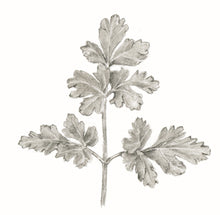Scientific name: Petroselinum crispum
Common name: Parsley
General description: This plant, native to the Mediterranean region of Southern Europe and Western Asia, was considered sacred during Greek antiquity and associated with funeral rites, being used to decorate the graves and monuments of war victims. It was the Romans who started using parsley as food and also using parsley crowns at parties to avoid alcohol poisoning.
It is used most often for its leaves. There is a variety that produces thick carrot- or parsnip-like roots, which are white in color and strong in flavor, and which can be eaten raw or cooked from which an oil with aphrodisiac properties can be extracted.
- Parsley 'Einfach schnitt 3', classic variety with cut leaves.
- Parsley 'Giant of Italy' has large, broad leaves with a slightly spicy taste.
Nutritional facts: High in antioxidants (especially luteolin), vitamins C, A, and B9, minerals calcium, and potassium.
GROWING CONDITIONS
Climate: Preferably grows in a temperate climate. It is relatively adaptable, preferring plenty of light without strong sunlight direct.
Soil: Well-drained, fertile, and rich in organic matter, but it is a hardy plant and adapts well to poor soils.
Watering: Keep the soil moist without waterlogging.
Associations: Leek, Asparagus, Corn, Radish, Tomato.
Sowing time: From February to September.
Harvest time: From April to November.






